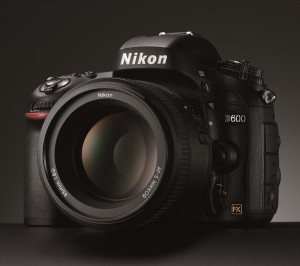 After Nikon released the D600 on September 13, many waiting for the D300/D300s replacement were left wondering if there would still be a D400. What is clear is that Nikon made the D600 for the consumer market, and even use the term “enthusiast” to describe its target customer. While the D600 incorporates many high-features, it also lacks some elements that separate it from Nikon’s professional ranks.
After Nikon released the D600 on September 13, many waiting for the D300/D300s replacement were left wondering if there would still be a D400. What is clear is that Nikon made the D600 for the consumer market, and even use the term “enthusiast” to describe its target customer. While the D600 incorporates many high-features, it also lacks some elements that separate it from Nikon’s professional ranks.
The D600 has a body with top and back made from magnesium alloy, but the front of the camera and its internal frame is polycarbonate like the rest of the consumer line. For this reason it is not suitable for rigorous use with a long telephoto lens. Professional cameras have a full magnesium frame and body and can withstand more abuse. The D600 Multi-Cam 4800FX auto focus system was adapted from the D7000. While it offers increased sensitivity down to f/8, it is not the more advanced AF offered in the D800 and D4. The D600 will not provide the advanced tracking expected by wildlife photographers. The D600 maximum shutter speed is only 1/4,000 second. Professional D4, D800 and even the D7000 offer 1/8,000 second shutter. The D600 lacks the standard PC sync port and has a slow flash sync speed of 1/200. It has a maximum continuous shooting frame rate of only 5.5fps which can not be increased with a battery grip. Perhaps the most important fact is that it only offers 10.5 MP images in DX mode. This is lower than even the 5-year old 12.3MP D300.
Dirk Jasper, Product Manager at Nikon Europe, was asked by dpreview at Photokina how the D600 compares with the D300s. Jasper explains, “The D300S is a different concept. It’s a semi-pro DX system camera and [D600] is an enthusiast camera.” Although Nikon expects some to upgrade from the D300/D300s to the D600, the customer is different. The D600 is a consumer-oriented version of the D700.
In recent history, Nikon has not always maintained existing camera lines. Just because there was a D200 and D300 may not necessarily mean there will be a D400. The D800 was not a follow-up to any camera, but rather a new concept. Nikon essentially phased out the D3X and D700 by bringing out the D800 and D600.
The Nikon D7000 is about due for an update, while the D300s is overdue. What will Nikon do with high-end DX? If we look to Nikon’s rival, Canon, we see that a 7D Mark II is in the works for early 2013. The D400 would be its direct competitor, and we know from history that Nikon and Canon are in lock-step when introducing products.
Nikon has plenty of room in its product line between the D7000 currently at $999 and the D600 at $2099. There is a possibility that Nikon could combine the D5100 and D7000 into one line, an enthusiast DX aimed at both photography and video, and then make the D400 a professional or semi-pro DX around $1799. The D400 seems more of a certainty at this point than a D7100.
